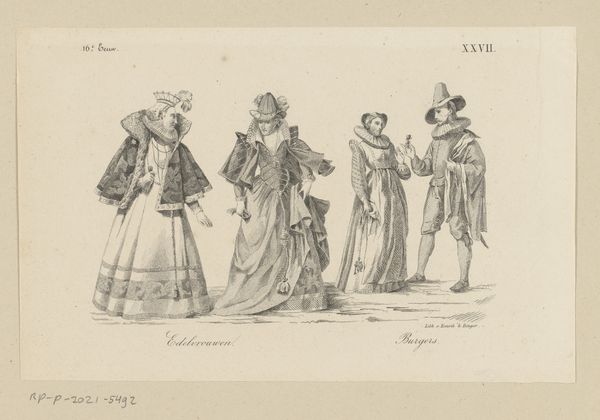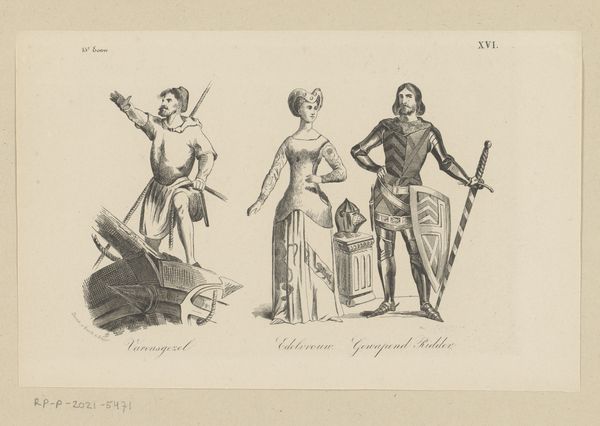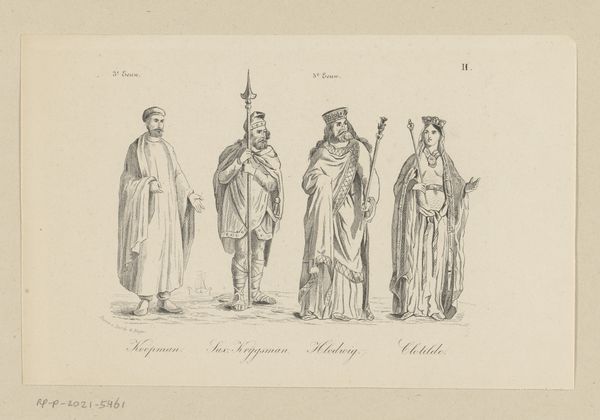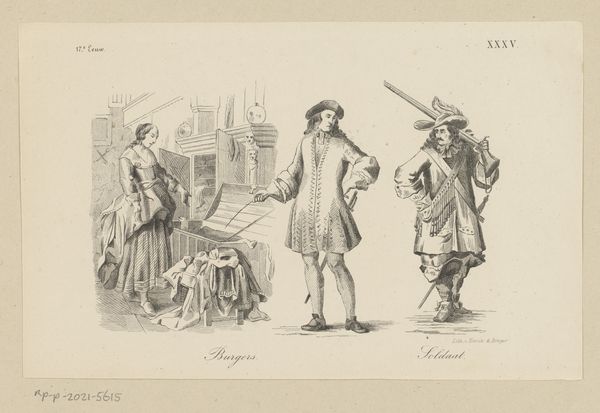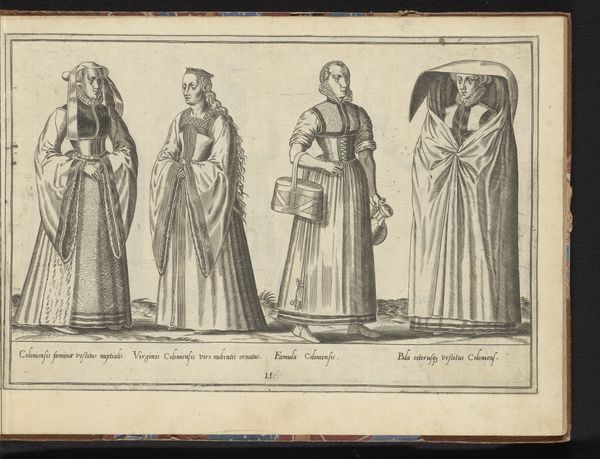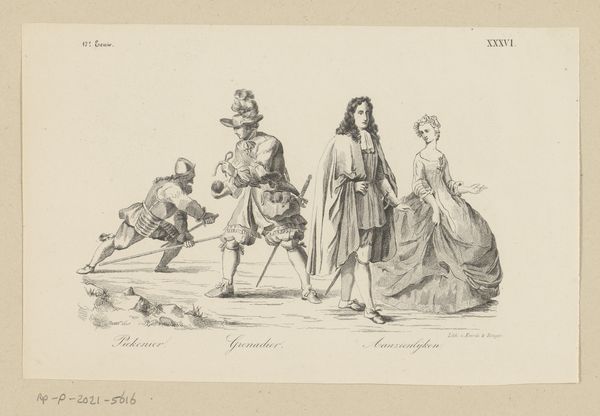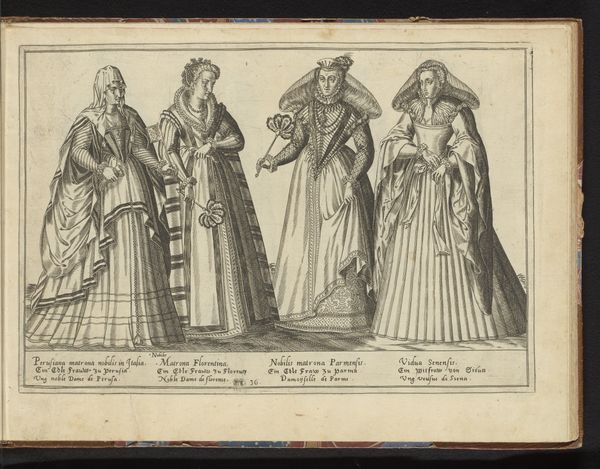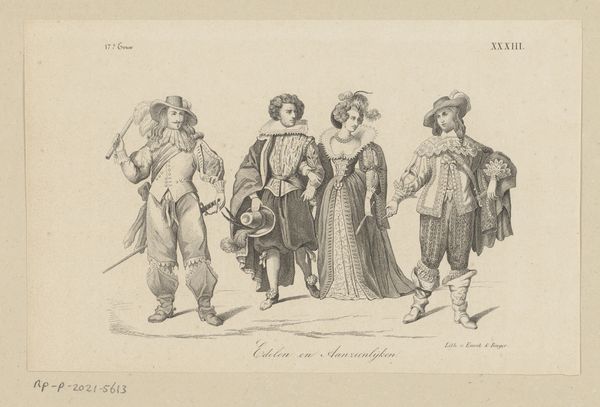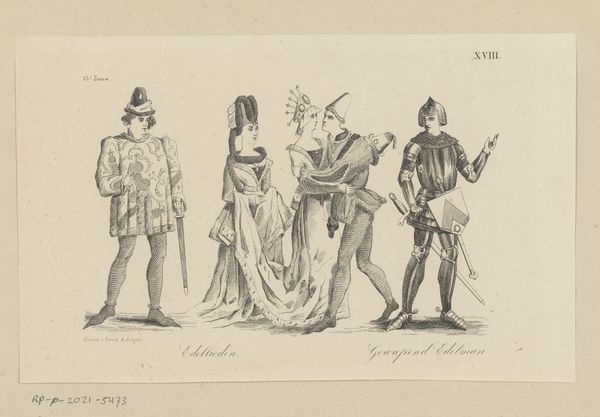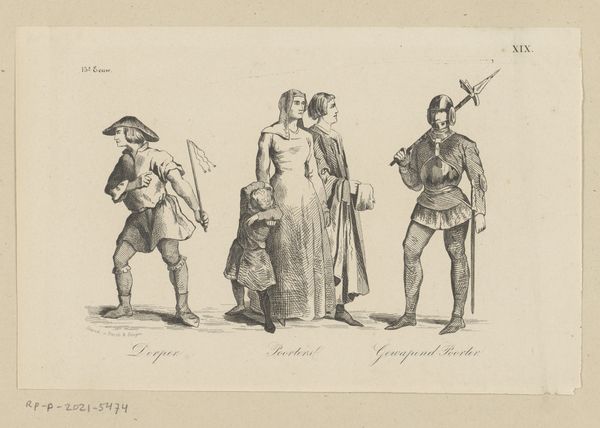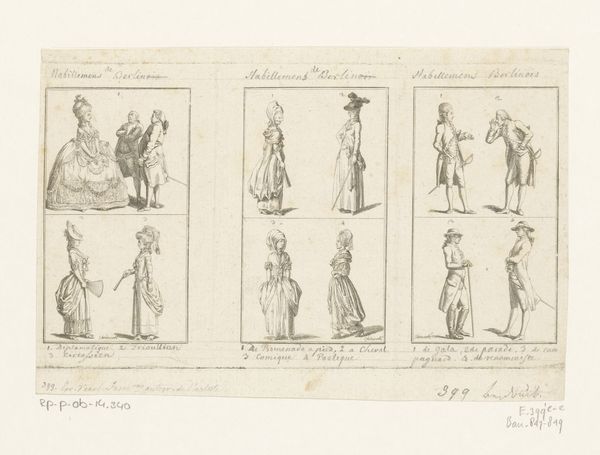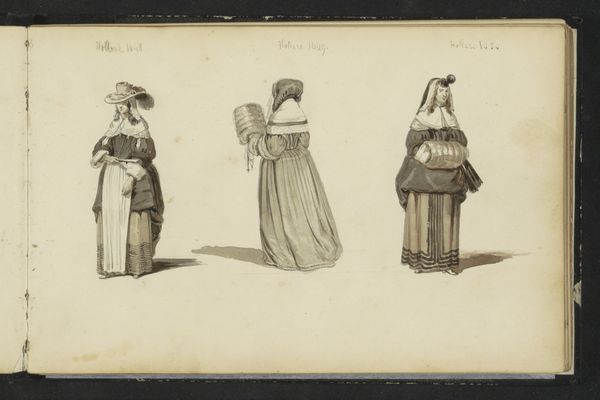
Dimensions: height 150 mm, width 236 mm
Copyright: Rijks Museum: Open Domain
Editor: So, here we have an engraving from 1857 titled "Poorteressen en Filips de Goede in kleding uit de vijftiende eeuw"—or, in English, "Women of the Bourgeoisie and Philip the Good in Fifteenth-Century Clothing." It depicts three figures, and what strikes me first is how staged they appear, like actors posing. What’s your take? Curator: That sense of theatricality is key. This piece reflects 19th-century Romanticism's interest in the past, particularly the Middle Ages, but through a very specific lens. Consider the socio-political climate of the Netherlands in 1857. How might representing the 15th century serve a purpose beyond mere historical record? Editor: Well, given the title and focus on clothing, it almost feels like a display of national pride, or perhaps an idealized version of the past? Curator: Precisely. It's important to remember that the past is never neutral. By portraying the figures in a certain light—dignified, virtuous, prosperous—the artist is contributing to a national narrative. Consider also the medium: a print. How does reproduction and dissemination factor into constructing and distributing such an image? Editor: Because it would become widespread, easily seen? Almost like propaganda? Curator: One could certainly see it that way. Also, reflect on why 19th-century artists depicted history. Do you see nostalgia for a specific historical moment that no longer existed? Editor: I do. This print isn't just about clothes; it’s about power, identity, and how the past is used to shape the present. I’m definitely seeing the layers beyond just historical representation. Curator: Exactly. And, crucially, who is empowered by this version of history, and who might be left out or misrepresented? Editor: So true! I now appreciate the way Romanticism, academic art and historicism of that era are deeply intertwined with a distinct socio-political vision of its time.
Comments
No comments
Be the first to comment and join the conversation on the ultimate creative platform.
